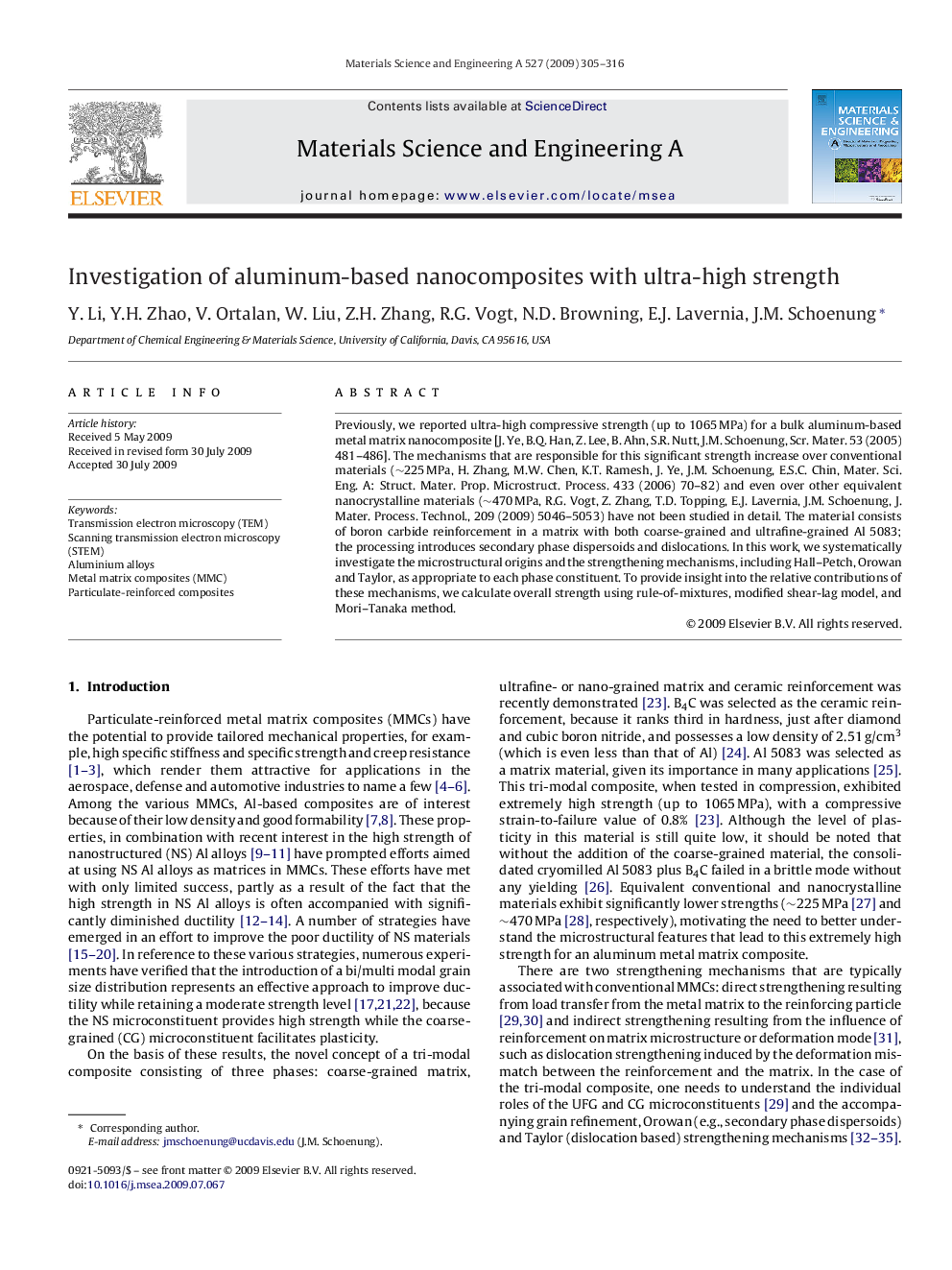| Article ID | Journal | Published Year | Pages | File Type |
|---|---|---|---|---|
| 1580277 | Materials Science and Engineering: A | 2009 | 12 Pages |
Abstract
Previously, we reported ultra-high compressive strength (up to 1065Â MPa) for a bulk aluminum-based metal matrix nanocomposite [J. Ye, B.Q. Han, Z. Lee, B. Ahn, S.R. Nutt, J.M. Schoenung, Scr. Mater. 53 (2005) 481-486]. The mechanisms that are responsible for this significant strength increase over conventional materials (â¼225Â MPa, H. Zhang, M.W. Chen, K.T. Ramesh, J. Ye, J.M. Schoenung, E.S.C. Chin, Mater. Sci. Eng. A: Struct. Mater. Prop. Microstruct. Process. 433 (2006) 70-82) and even over other equivalent nanocrystalline materials (â¼470Â MPa, R.G. Vogt, Z. Zhang, T.D. Topping, E.J. Lavernia, J.M. Schoenung, J. Mater. Process. Technol., 209 (2009) 5046-5053) have not been studied in detail. The material consists of boron carbide reinforcement in a matrix with both coarse-grained and ultrafine-grained Al 5083; the processing introduces secondary phase dispersoids and dislocations. In this work, we systematically investigate the microstructural origins and the strengthening mechanisms, including Hall-Petch, Orowan and Taylor, as appropriate to each phase constituent. To provide insight into the relative contributions of these mechanisms, we calculate overall strength using rule-of-mixtures, modified shear-lag model, and Mori-Tanaka method.
Keywords
Related Topics
Physical Sciences and Engineering
Materials Science
Materials Science (General)
Authors
Y. Li, Y.H. Zhao, V. Ortalan, W. Liu, Z.H. Zhang, R.G. Vogt, N.D. Browning, E.J. Lavernia, J.M. Schoenung,
